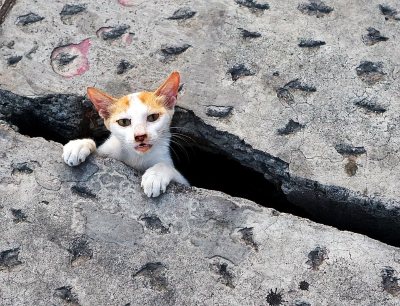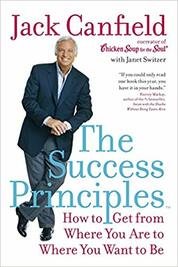 How do you know you’re stuck? You diet for a week and the number on your bathroom scale doesn’t change. Or the same items appear each Monday on your to-do list. Sound familiar? When you feel stuck, you start to think that nothing you do matters, so you stop doing it, and then you really are stuck. My favorite advice on getting unstuck is from the author Jack Canfield, who offers a useful formula:  “Do more of what is working, do less of what isn’t, and try on new behaviors to see if they produce better results.” Canfield’s advice assumes that the only thing you control is your own behavior—what you do, or don’t do, every day. For artists who are struggling to make their way in the confusing art world, it’s a strategy worth trying. Start by identifying what’s working in your art practice, and then do more of it. Maybe you love being in your studio, or taking art classes, or visiting other artists. So try doubling the amount of time you spend doing these activities. The best part of the exercise is that you have to think about what is working in your art practice, and that alone can make you feel less stuck. Then think about what’s NOT working. Most of the artists I know come up with this list easily! But instead of complaining, slowly begin to do less of the things that aren’t working for you. Maybe you’ve been volunteering as a docent at a museum, and you get little out of it. So you cut back on your hours. Making small changes, wherever you can, puts you in motion and gives you control over your life. The last part of Canfield’s advice is to try on new behaviors to see if you get better results. Even though artists are the most imaginative people I know, they sometimes have difficulty bringing an experimental spirit to their art career. New behaviors are often tiny, and work only gradually. If you have a to-do list that never gets done, try breaking down your first item into smaller and smaller bits. Eventually you reach an action that is so small it is laughable, and easily done, so you do it. And then you do the next one, because you have broken the logjam. For most of us, it is easier to keep going than to begin. Set yourself in motion. The best new behaviors get you out of your head and into the world, so that you are engaged with others. Make an appointment with someone, perhaps to ask for advice about museums you’re interested in. The best kind of appointment is one where you need to prepare ahead of time, so that you’re forced to complete a task you’ve been avoiding. In this example you’ll need to make a list of museums, and visit their websites, so you have your questions ready. Just making the appointment gets you started. The opposite of being stuck is to be in motion. Motion can be physical (making that phone call) or mental (thinking about what’s working in your art practice) or emotional (feeling that new behaviors could make a difference). So, ask yourself:
Mary Mary Edwards, Ph.D. Career & Life Coach for Artists www.coachingforartists.com I’m a Career and Life Coach for Artists, based in the San Francisco Bay Area and working with artists across the United States and internationally. If you’d like to ask a question or set up a time to talk, please write to me at: [email protected]. Comments are closed.
|
Mary's BlogAs an artist coach, I bring a unique combination of business knowledge, art world experience, and professional coaching skill to my practice. |